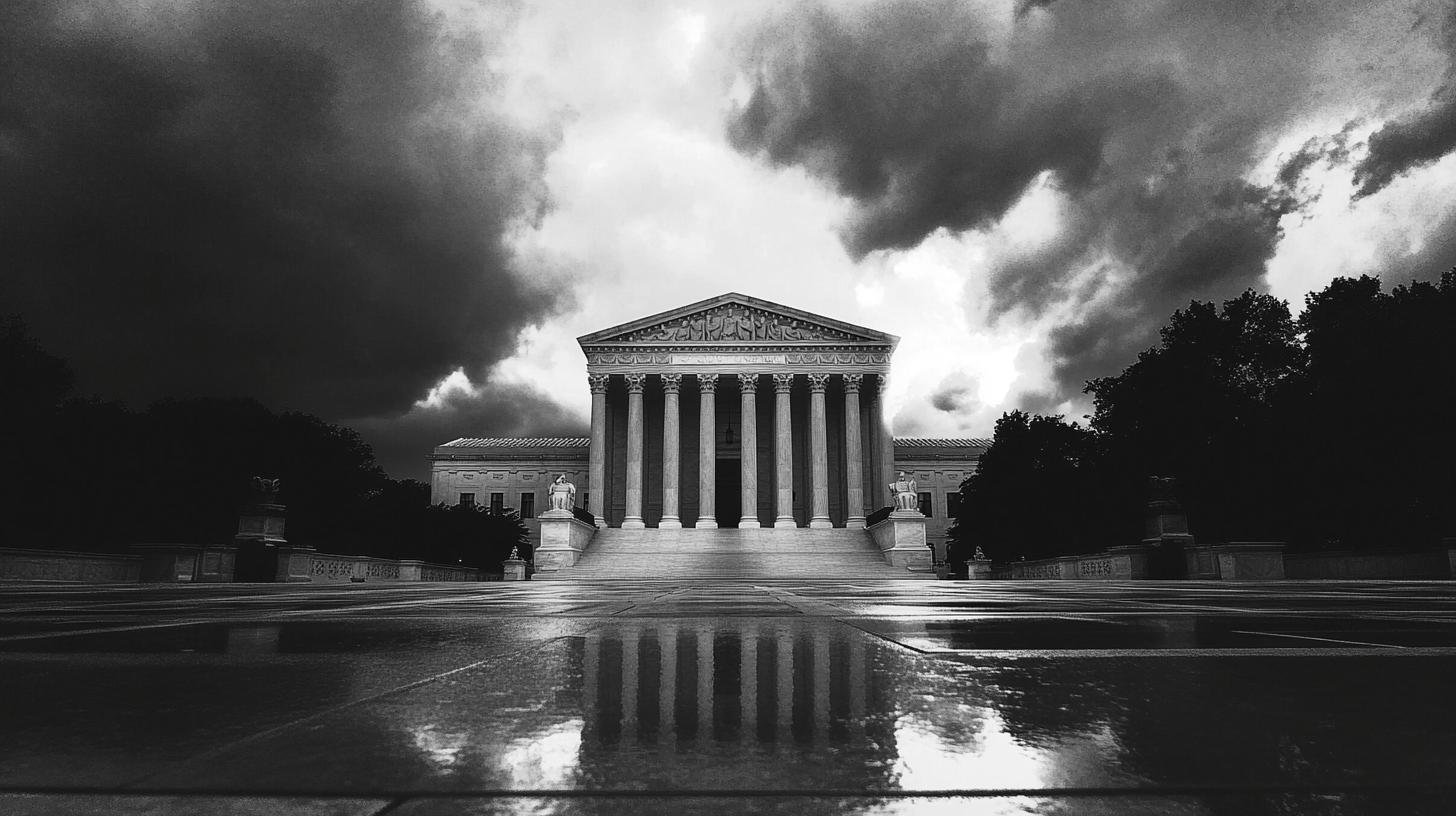TL;DR:
- Affirmative Action: Developed to address systemic racism in U.S. college admissions.
- Key Cases:
- Regents v. Bakke (1978): Banned racial quotas; allowed race as a factor.
- SFFA v. Harvard/UNC (2021): Affirmative action policies unconstitutional; required merit-based admissions.
- Controversy: Critics argue it leads to reverse discrimination; supporters claim it’s necessary for equality.
- Impact on Diversity: Increased minority representation but low enrollment rates persist despite outreach efforts.
- Alternatives: Socioeconomic status and race-blind admissions proposed, but they don’t fully address unique racial challenges.
- Future: Expect a shift to holistic reviews and non-race-based metrics to achieve diversity while addressing systemic inequality.
Is it fair to give students a leg up in college admissions based on their race? This question has sparked debates for decades.
The term race-based admissions refers to policies aimed at increasing diversity by considering race as one factor in the college admissions process. This approach stems from a long history of trying to correct systemic inequalities.
In this article, we’ll explore the history, key court decisions, the effects on diversity, and the ongoing debate surrounding race-based admissions.
Historical Context of Race-Based Admissions
Race-based admissions policies emerged in response to the long history of racial inequality in the U.S. These policies, often referred to as affirmative action, were designed to increase access to higher education for underrepresented minorities.
A major turning point came in 1978 with the Regents of the University of California v. Bakke case. The Supreme Court ruled that while racial quotas were unconstitutional, race could still be one of many factors in college admissions. This decision marked a significant moment in the push for diversity in higher education.
Following the Bakke decision, colleges adopted more nuanced approaches. Holistic reviews became common, where race was considered alongside other factors like socioeconomic background and extracurricular activities. These changes aimed to create a more inclusive and diverse learning environment.
Despite these efforts, race-based admissions policies have been highly controversial. Critics argue that they can result in reverse discrimination, while supporters believe they are essential to counteract historic injustices and promote equal opportunities.
Legal Framework and Supreme Court Decisions on Race-Based Admissions

The legal framework for race-based admissions has been shaped by key Supreme Court decisions. One significant ruling came from the Students for Fair Admissions case. This case declared that affirmative action policies at Harvard and UNC violated the Constitution. This decision shifted how race can be considered in college admissions, emphasizing the need for a fair process that does not favor any racial group too heavily.
There’s still confusion about how this ruling applies to high schools. The Coalition for TJ v. Fairfax County School Board case highlights this ambiguity. In this case, the court had to decide if college admissions principles should also govern high school admissions. The outcome of these discussions could redefine how educational institutions at all levels approach diversity.
Another notable case is Connecticut Parents Union v. Cardona. This case underscored that race-based quotas could sometimes harm the very groups they aim to help by fostering perceptions of unfair advantage. This decision supports arguments for alternative methods to achieve diversity without explicitly focusing on race.
| Case | Decision |
|---|---|
| Regents of the University of California v. Bakke (1978) | Banned racial quotas but allowed race as one factor in admissions |
| Gratz v. Bollinger (2003) | Struck down point-based admission systems that favored minority applicants |
| Fisher v. University of Texas (2016) | Upheld the use of race in admissions under strict scrutiny |
| Students for Fair Admissions v. Harvard/UNC (2021) | Ruled that affirmative action policies violated the Constitution |
The Impact of Race-Based Admissions on College Diversity
Race-based admissions have undoubtedly shaped the demographics of college campuses. Policies that consider race as a factor in admissions have led to:
- Increased Representation: More students from underrepresented minority groups are attending college, helping to close racial gaps in higher education.
- Diverse Perspectives: A racially diverse student body enhances learning by introducing a variety of viewpoints.
- Cultural Competence: Exposure to different cultures and backgrounds helps prepare students for a globalized workforce.
- Community Support: Racial diversity fosters peer support networks for minority students, creating a more inclusive campus culture.
However, despite these benefits, nine states have banned affirmative action, requiring colleges to seek alternatives. These states now focus on outreach programs aimed at low-income or first-generation students to maintain diversity.
Although effective to some degree, these alternatives have not fully compensated for the removal of race-conscious admissions.
Arguments Against Race-Based Admissions

Many argue that admissions should be based solely on merit, emphasizing academic achievements and work ethic. Some main arguments against race-based admissions include:
- Merit-Based Fairness: Critics believe that academic performance should be the primary criterion for college acceptance, ensuring that all students are treated equally.
- Reverse Discrimination: Opponents argue that race-based policies may favor one group over another, as seen in the Students for Fair Admissions v. Harvard case, where Asian-American students alleged discrimination.
Effectiveness: Some say race-based policies don’t address root causes like K-12 educational disparities. They argue that improving early education for underrepresented groups would lead to more equal opportunities.
Case Studies: Harvard and UNC Race-Based Admissions Cases
The Supreme Court’s decision in the Students for Fair Admissions (SFFA) case against Harvard and the University of North Carolina (UNC) was pivotal. The court ruled that the affirmative action policies at these institutions violated the Constitution, altering the landscape of college admissions. This decision emphasized that admissions processes should be free from racial biases, aiming for fairness for all applicants.
Harvard faced claims of discrimination, particularly against Asian-American applicants, who argued that the university’s policies disadvantaged them. Despite denying these claims, Harvard has had to make significant changes to its admissions process to comply with the ruling.
Similarly, UNC’s policies were also scrutinized for their constitutionality. The ruling against UNC has broader implications for other educational institutions using similar practices. As a result, universities nationwide are reevaluating their criteria to ensure compliance with the new legal standards, focusing more on merit-based metrics.
Key Outcomes of the Harvard and UNC Cases:
-
- End to Race-Based Admissions: The ruling required both institutions to eliminate race consideration in admissions.
- Policy Revisions: They had to revise their admissions policies to align with constitutional requirements.
- Nationwide Impact: The decision set a precedent, influencing other universities to modify their strategies.
Alternatives to Race-Based Admissions

One alternative to race-based admissions is considering socioeconomic status. This method aims to give advantages to students from lower-income backgrounds who often face significant educational barriers. While this approach can help increase economic diversity, it doesn’t fully address the unique challenges faced by racial minorities. Socioeconomic status alone doesn’t capture cultural and systemic biases that specifically affect students of color.
Race-blind admissions are another proposed solution. This method removes the consideration of race from the admissions process, focusing solely on academic performance and personal achievements. Although race-blind admissions aim for fairness, they often fail to benefit students of color. Without addressing underlying inequalities in K-12 education and other systemic issues, race-blind policies may perpetuate existing disparities.
Challenges of Alternatives to Race-Based Admissions:
-
- Limited Scope: Socioeconomic status doesn’t cover the full range of challenges faced by minority students.
- Systemic Bias: Race-blind policies don’t address systemic inequalities in education.
- Cultural Factors: Alternatives often overlook cultural differences that impact educational opportunities.
- Incomplete Solutions: These methods may not achieve the same level of diversity as race-based admissions.
- Implementation Issues: Practical difficulties can arise in accurately assessing socioeconomic status.
The Future of Race-Based Admissions
The recent Supreme Court ruling will likely reshape the landscape of college admissions for years to come. Many colleges are expected to shift focus toward socioeconomic and geographic factors. Holistic reviews, which consider an applicant’s unique experiences and challenges, may also become more common.
As colleges adapt to these changes, addressing systemic inequalities will remain crucial. Improving access to quality education from early childhood through high school is essential for leveling the playing field. By doing so, society can move closer to achieving equal opportunities for all students, regardless of race.
Conclusion
Race-based admissions have played a pivotal role in shaping college diversity and addressing historic inequalities. From landmark cases like Bakke to recent rulings in Students for Fair Admissions, the debate over fairness and effectiveness continues.
As the legal landscape changes, universities must explore new strategies for fostering diversity. While alternatives like socioeconomic and holistic reviews show promise, the challenge of achieving true racial equality in education remains.
FAQ
What is race-based admissions?
It involves considering an applicant’s race as one factor in the college admissions process to promote diversity.
Is it legal?
In some states, it is banned, and recent Supreme Court rulings have further limited its use.
When did affirmative action in admissions start?
It began in the 1960s to address racial inequalities.
What are the pros and cons?
Pros: increased diversity and addressing historical injustices. Cons: concerns about fairness and reverse discrimination.
How can colleges maintain diversity without race-based admissions?
Colleges can focus on socioeconomic status, geographic location, and holistic review processes that consider a wide range of personal and academic factors to promote diversity.

